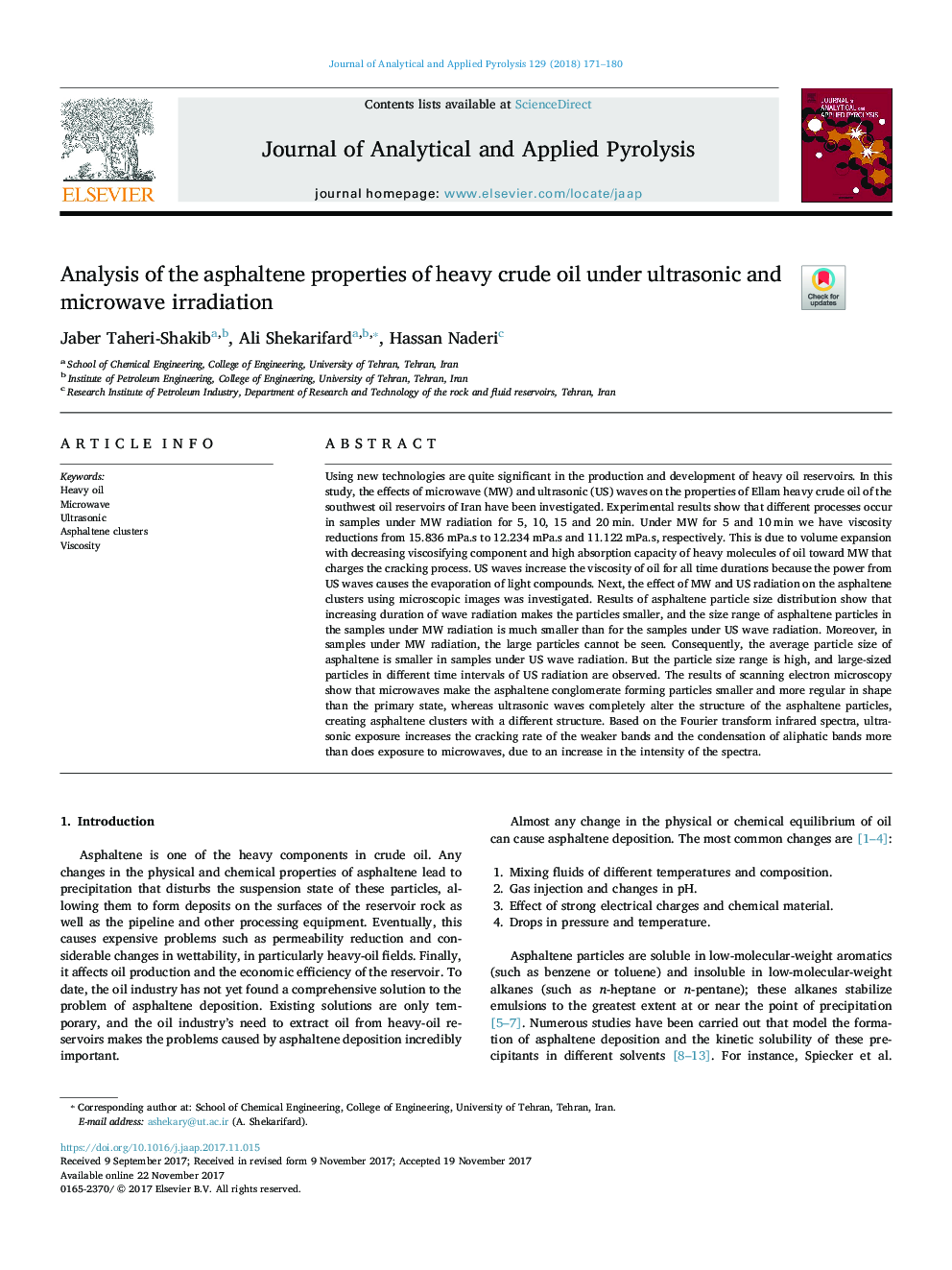| کد مقاله | کد نشریه | سال انتشار | مقاله انگلیسی | نسخه تمام متن |
|---|---|---|---|---|
| 7606461 | 1492948 | 2018 | 10 صفحه PDF | دانلود رایگان |
عنوان انگلیسی مقاله ISI
Analysis of the asphaltene properties of heavy crude oil under ultrasonic and microwave irradiation
ترجمه فارسی عنوان
تجزیه و تحلیل خواص آسفالتین نفت خام سنگین تحت اشعه ماوراء بنفش و مایکروویو
دانلود مقاله + سفارش ترجمه
دانلود مقاله ISI انگلیسی
رایگان برای ایرانیان
کلمات کلیدی
روغن سنگین، مایکروویو، سونوگرافی، خوشه آسفالتین، ویسکوزیته،
موضوعات مرتبط
مهندسی و علوم پایه
شیمی
شیمی آنالیزی یا شیمی تجزیه
چکیده انگلیسی
Using new technologies are quite significant in the production and development of heavy oil reservoirs. In this study, the effects of microwave (MW) and ultrasonic (US) waves on the properties of Ellam heavy crude oil of the southwest oil reservoirs of Iran have been investigated. Experimental results show that different processes occur in samples under MW radiation for 5, 10, 15 and 20Â min. Under MW for 5 and 10Â min we have viscosity reductions from 15.836 mPa.s to 12.234 mPa.s and 11.122 mPa.s, respectively. This is due to volume expansion with decreasing viscosifying component and high absorption capacity of heavy molecules of oil toward MW that charges the cracking process. US waves increase the viscosity of oil for all time durations because the power from US waves causes the evaporation of light compounds. Next, the effect of MW and US radiation on the asphaltene clusters using microscopic images was investigated. Results of asphaltene particle size distribution show that increasing duration of wave radiation makes the particles smaller, and the size range of asphaltene particles in the samples under MW radiation is much smaller than for the samples under US wave radiation. Moreover, in samples under MW radiation, the large particles cannot be seen. Consequently, the average particle size of asphaltene is smaller in samples under US wave radiation. But the particle size range is high, and large-sized particles in different time intervals of US radiation are observed. The results of scanning electron microscopy show that microwaves make the asphaltene conglomerate forming particles smaller and more regular in shape than the primary state, whereas ultrasonic waves completely alter the structure of the asphaltene particles, creating asphaltene clusters with a different structure. Based on the Fourier transform infrared spectra, ultrasonic exposure increases the cracking rate of the weaker bands and the condensation of aliphatic bands more than does exposure to microwaves, due to an increase in the intensity of the spectra.
ناشر
Database: Elsevier - ScienceDirect (ساینس دایرکت)
Journal: Journal of Analytical and Applied Pyrolysis - Volume 129, January 2018, Pages 171-180
Journal: Journal of Analytical and Applied Pyrolysis - Volume 129, January 2018, Pages 171-180
نویسندگان
Jaber Taheri-Shakib, Ali Shekarifard, Hassan Naderi,
